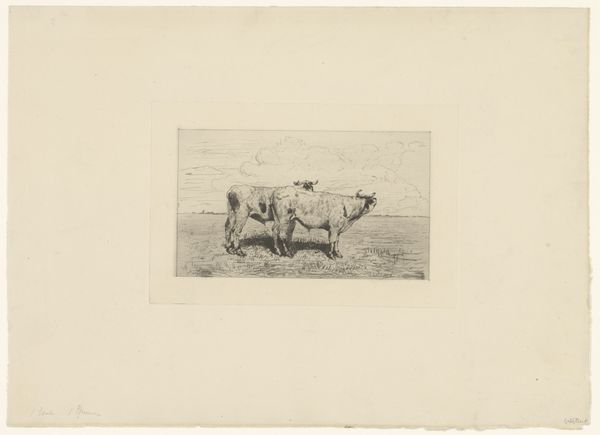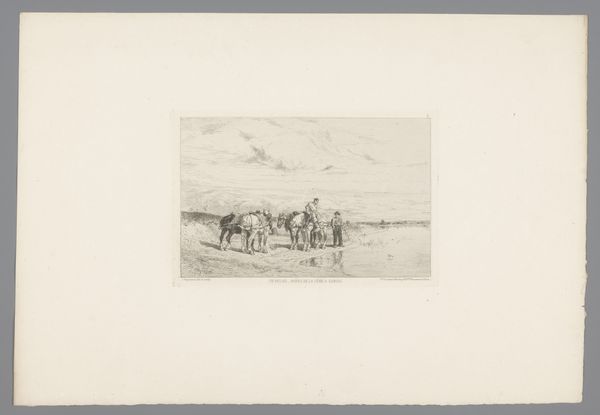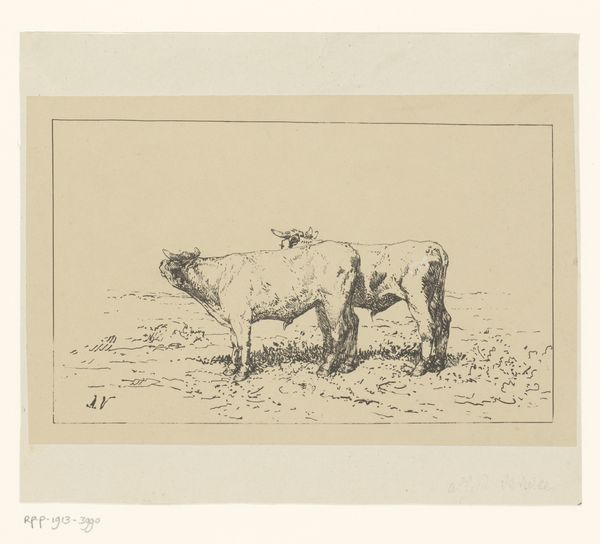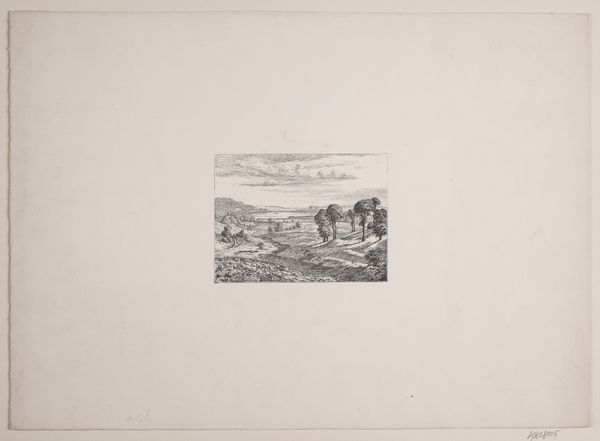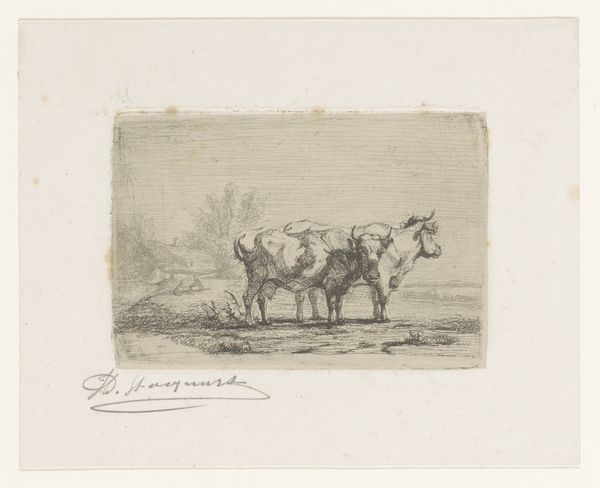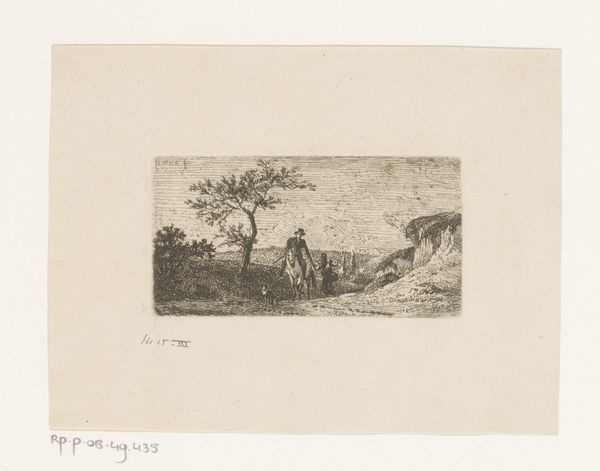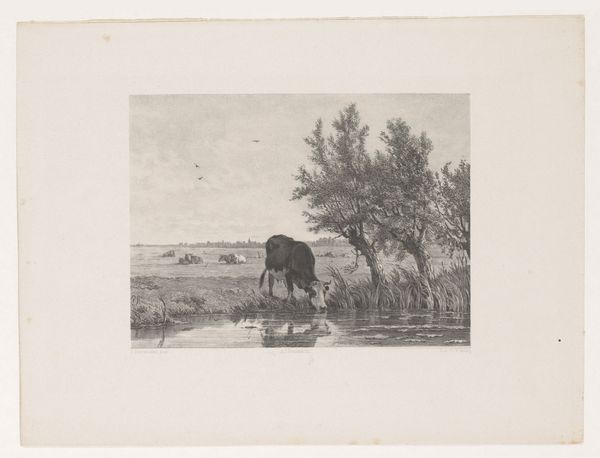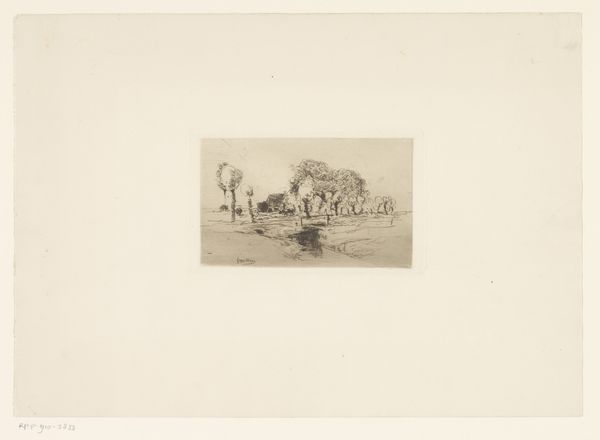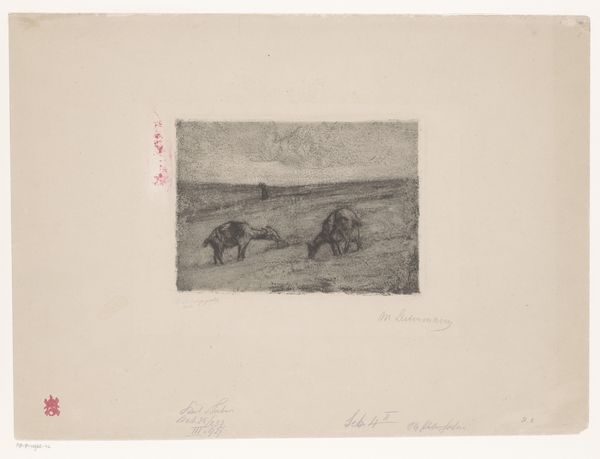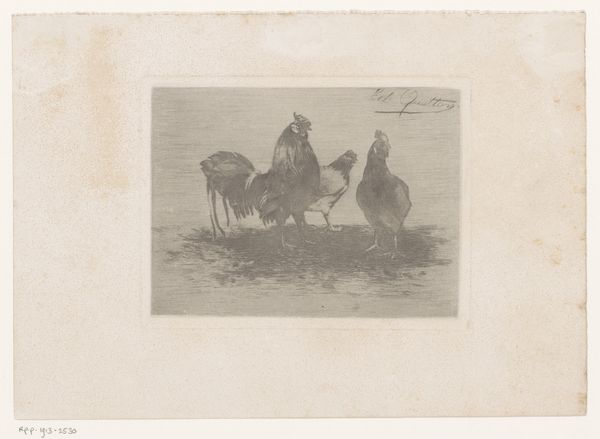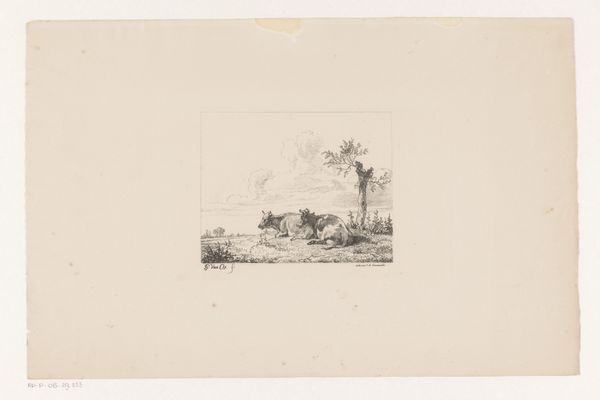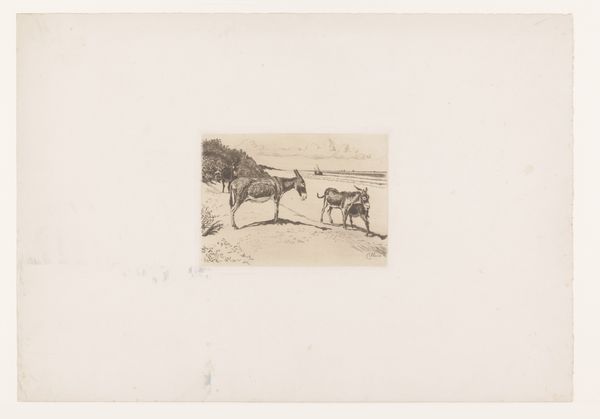
drawing, pencil
#
drawing
#
aged paper
#
toned paper
#
light pencil work
#
ink paper printed
#
pencil sketch
#
landscape
#
personal sketchbook
#
ink drawing experimentation
#
pencil
#
horse
#
ink colored
#
sketchbook drawing
#
genre-painting
#
sketchbook art
#
realism
Dimensions: height 80 mm, width 119 mm
Copyright: Rijks Museum: Open Domain
Editor: This is "Drie ploegende paarden en een boer in Heerde," or "Three Plowing Horses and a Farmer in Heerde," a pencil drawing made around 1890 by Richard Nicolaüs Roland Holst. The wispy lines give it a dreamlike quality. What strikes you most about this work? Curator: The immediacy of the drawing, its very "sketchiness", speaks volumes about the process. Look closely – the toned paper isn't merely a passive surface; it actively contributes to the light and shadow, almost as if the earth itself is seeping into the scene. It highlights the labor. Editor: So you’re saying the paper itself is part of the meaning? How so? Curator: Precisely! Holst isn't just depicting labor, but implicating it. The rough paper stock is an interesting choice. Consider how it democratizes art-making; the drawing brings high art down to earth, to the materiality of daily life. It questions: who is this *for*? Who consumes images of the working class, and to what end? Editor: I hadn't thought of it that way, that the drawing itself speaks about labour. Curator: The subject is not only the worker himself, but also Holst and his artistic process. Do you notice the location, Heerde? That may reflect an attempt to connect with local subjects. Editor: It's fascinating to consider how the humble materials and Holst's own hand contribute to the story. Curator: Indeed. By shifting our focus to production and materiality, we uncover layers of social commentary that might otherwise remain hidden. It's a subtle reminder that art isn't divorced from the world; it's actively shaping our understanding of it.
Comments
No comments
Be the first to comment and join the conversation on the ultimate creative platform.

